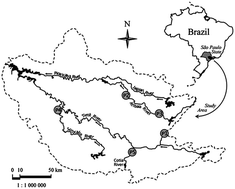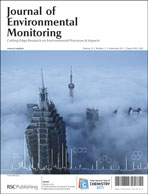Bioluminescent yeast estrogen assay (BLYES) as a sensitive tool to monitor surface and drinkingwater for estrogenicity
Abstract
Estrogenic Endocrine Disrupting Chemicals (EDCs) are a concern due to their ubiquity and recognized adverse effects to humans and wildlife. Methods to assess exposure to and associated risks of their presence in aquatic environment are still under development. The aim of this work is to assess estrogenicity of raw and treated waters with different degrees of pollution. Chemical analyses of selected EDCs were performed by


 Please wait while we load your content...
Please wait while we load your content...